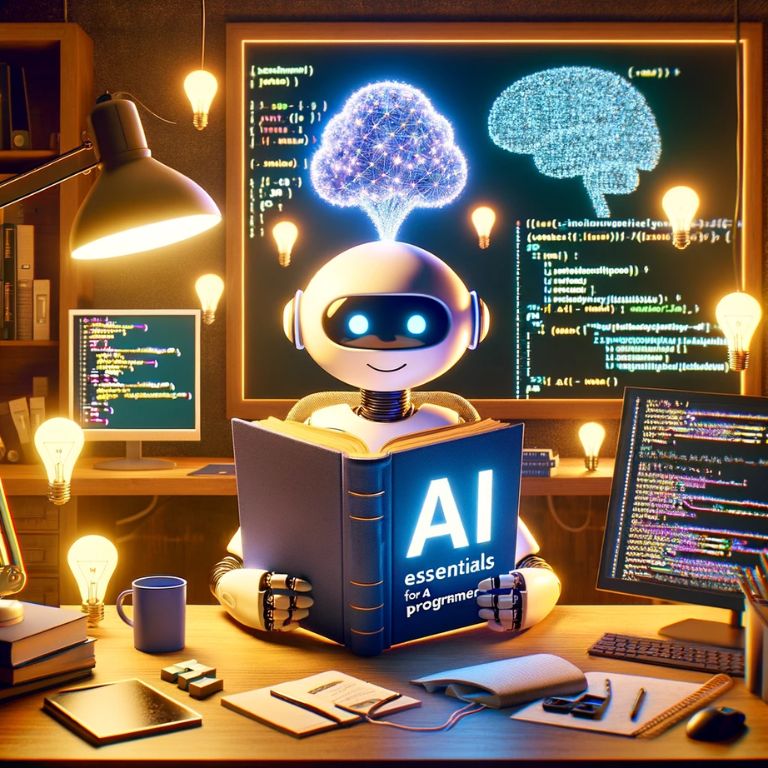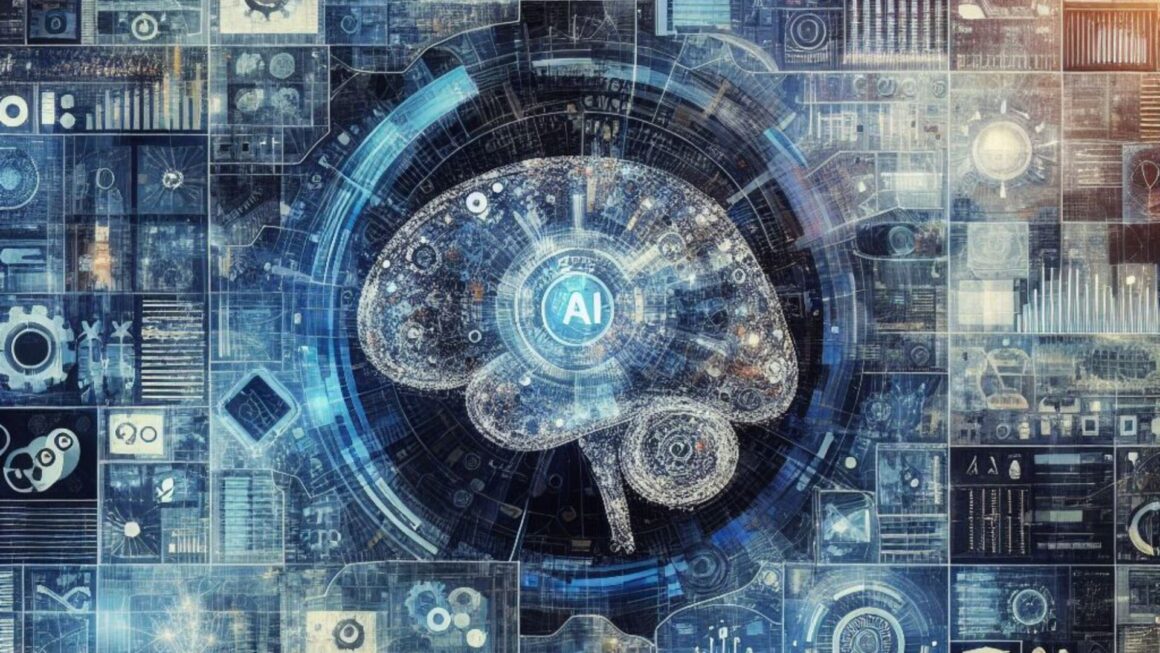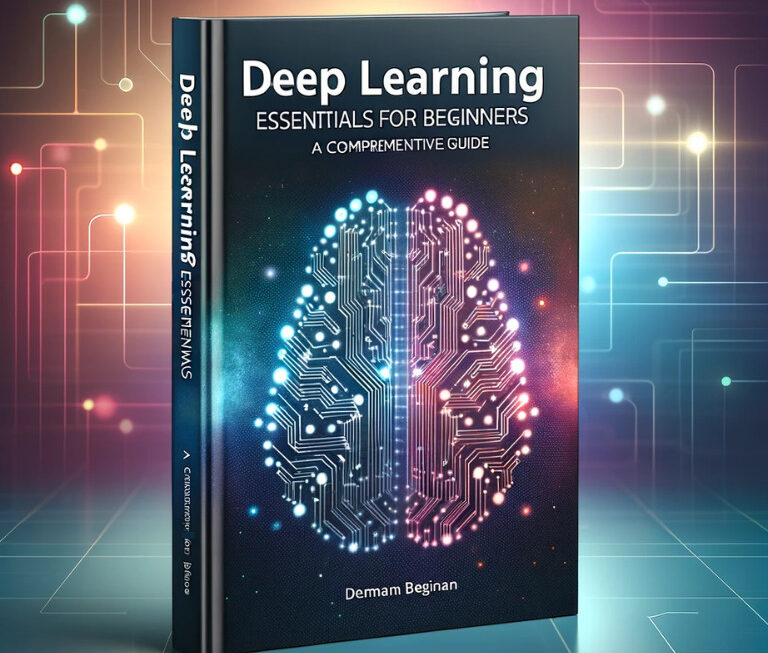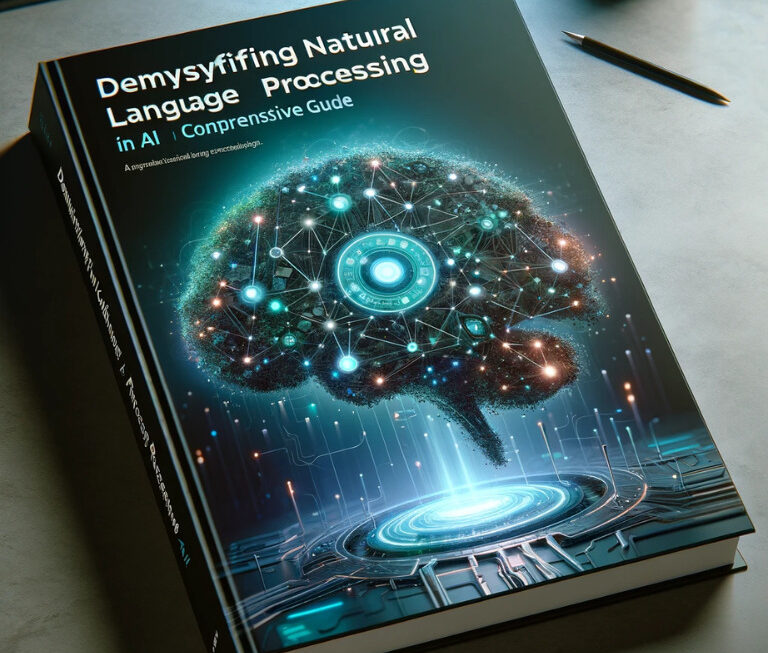Introduction to AI
Artificial Intelligence (AI) is a transformative field that has been making waves in the technology world. It’s not just a buzzword; it’s a technological revolution that is reshaping industries and changing the way we interact with machines and data. In this article, we will embark on a journey to demystify AI for programmers, providing a comprehensive introduction to this exciting and rapidly evolving field.
Historical Perspective
To understand the present and future of AI, it’s crucial to grasp its historical context. The roots of AI can be traced back to ancient myths and folklore, where tales of artificially created beings fascinated human imagination. However, AI as we know it today has its origins in the mid-20th century.
Milestones and Breakthroughs in AI Research
The journey of AI has been marked by significant milestones and breakthroughs that have paved the way for the current state of the field. Here are some key highlights:
- Dartmouth Workshop (1956): Often considered the birth of AI, this workshop brought together pioneers like John McCarthy and Marvin Minsky to discuss the possibilities of creating intelligent machines.
- Expert Systems (1960s-1970s): Researchers began developing expert systems that could mimic human expertise in specific domains, such as medical diagnosis and financial analysis.
- Machine Learning Emerges (1980s): Machine learning, a subset of AI, gained prominence with algorithms like decision trees and neural networks.
- AI Winter (Late 1980s-1990s): High expectations led to disappointments, resulting in reduced funding and a period known as the “AI winter.”
- Rebirth of AI (21st Century): Advances in computing power, big data, and algorithms rekindled interest in AI. Breakthroughs like IBM’s Deep Blue defeating a chess champion and the rise of natural language processing (NLP) systems like IBM’s Watson signaled a new era.
- Deep Learning Revolution (2010s): Deep learning, fueled by neural networks with many layers, achieved remarkable success in tasks like image recognition, speech recognition, and autonomous driving.
- AI in Everyday Life (Present): AI is now an integral part of our lives, from virtual assistants like Siri and Alexa to recommendation systems on streaming platforms like Netflix.
Types of AI
Understanding the spectrum of artificial intelligence is essential for comprehending its capabilities and applications. AI can be broadly categorized into two primary types: Narrow AI (ANI) and General AI (AGI), each with distinct characteristics and purposes.
Narrow AI (ANI)
Narrow AI, also known as Weak AI, is designed for specific tasks or a limited range of functions. It operates within predefined parameters and lacks the ability to generalize knowledge or exhibit broad intelligence akin to human cognition. Instead, Narrow AI excels in its designated tasks. Here are some key attributes and examples of Narrow AI:
- Specialized Functionality: ANI systems are engineered for particular functions, demonstrating expertise in a specific domain or task.
- Limited Context: They operate within a well-defined context and cannot apply their knowledge beyond the specific problem they are designed to solve.
Examples of Narrow AI applications include virtual personal assistants like Siri and Alexa, recommendation systems on platforms like Netflix and Amazon, and email spam filters. These systems perform admirably within their designated niches but lack the adaptability and comprehensiveness of human intelligence.
General AI (AGI)
General AI, often referred to as Strong AI or Human-level AI, represents the aspiration of creating artificial intelligence systems that possess human-like cognitive abilities. AGI systems would be capable of understanding, learning, and adapting across a wide array of tasks, much like human beings. However, achieving AGI remains a formidable challenge, and contemporary AI systems predominantly fall under the category of Narrow AI. Key characteristics and the quest for AGI include:
- Human-like Intelligence: AGI systems would possess the capacity to understand, reason, and learn across various domains, resembling human intelligence.
- Adaptability: They could apply knowledge gained from one task to solve entirely new and unrelated problems, demonstrating versatility and generalization.
Efforts to build AGI involve overcoming significant challenges, including developing systems with common-sense reasoning, addressing ethical concerns, and implementing robust safety measures. While AGI remains a long-term objective, Narrow AI has already delivered substantial advancements and transformative applications across diverse sectors. It’s important to note that the boundary between ANI and AGI is not always sharply defined, and AI research continues to explore ways to bridge the gap between specialized and generalized intelligence.
Machine Learning Fundamentals
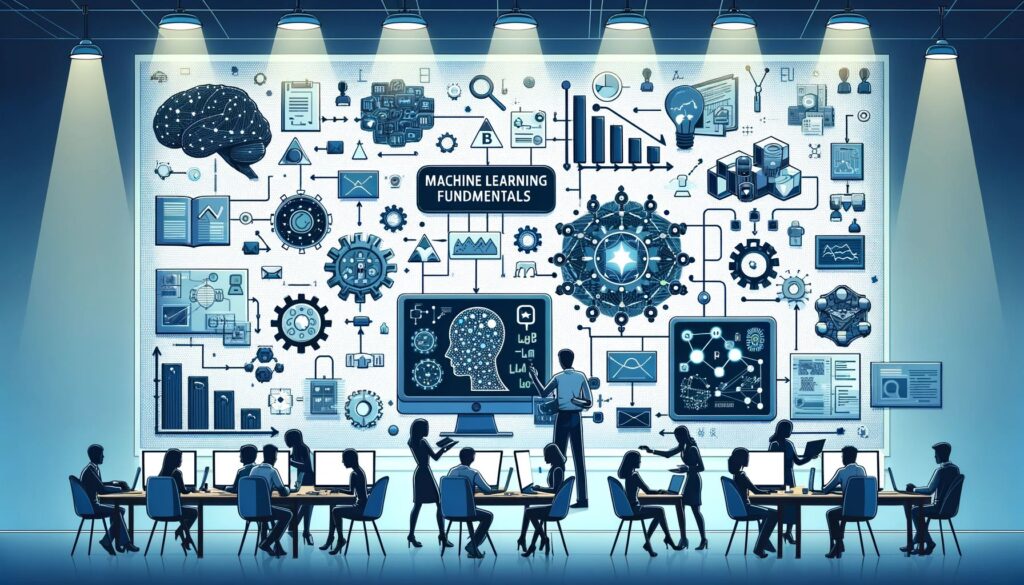
To understand the inner workings of artificial intelligence (AI), it’s essential to grasp the core concepts of machine learning, a subfield of AI that has revolutionized the way computers learn and make decisions. Machine learning forms the foundation for many AI applications and is instrumental in creating intelligent systems. In this section, we’ll delve into the fundamentals of machine learning.
Understanding Machine Learning
Machine learning is a data-driven approach to AI that empowers computers to learn from data and improve their performance on specific tasks over time. Unlike traditional rule-based programming, where developers explicitly define rules and logic, machine learning algorithms allow systems to learn patterns and make predictions or decisions without explicit programming.
Key Concepts in Machine Learning
Machine learning revolves around several key concepts:
- Data: Data is the lifeblood of machine learning. It encompasses the information used to train, validate, and test machine learning models. Data can take various forms, such as text, images, numbers, or any structured or unstructured information.
- Features: Features are the attributes or characteristics extracted from the data that are relevant to the learning task. For example, in image recognition, features might include pixel values, shapes, or colors.
- Algorithms: Machine learning algorithms are the mathematical models that process data and extract patterns. Common algorithms include decision trees, support vector machines, k-nearest neighbors, and neural networks.
- Training: The training phase involves feeding the algorithm with labeled data, where the correct outcomes or classifications are known. The algorithm adjusts its internal parameters to learn from this data.
- Validation and Testing: After training, models are validated and tested using new, unseen data to ensure they generalize well and make accurate predictions.
- Supervised vs. Unsupervised Learning: In supervised learning, models learn from labeled data, while unsupervised learning deals with unlabeled data, focusing on discovering patterns and structures.
- Overfitting and Underfitting: Overfitting occurs when a model learns noise in the training data, making it perform poorly on new data. Underfitting happens when a model is too simple to capture the underlying patterns.
- Evaluation Metrics: Metrics like accuracy, precision, recall, and F1-score measure the performance of machine learning models, depending on the nature of the task.
Machine Learning Applications
Machine learning has found its way into numerous real-world applications, including:
- Image and Speech Recognition: Machine learning is used in facial recognition, object detection, and speech-to-text conversion.
- Natural Language Processing (NLP): NLP techniques enable chatbots, language translation, sentiment analysis, and content recommendation.
- Healthcare: Machine learning aids in disease diagnosis, drug discovery, and predicting patient outcomes.
- Finance: Algorithms drive stock market predictions, credit scoring, and fraud detection.
- Autonomous Vehicles: Self-driving cars use machine learning for navigation, object detection, and decision-making.
- Recommendation Systems: Platforms like Netflix and Amazon use machine learning to suggest products and content to users.
In essence, machine learning allows computers to make data-driven decisions and adapt to changing circumstances, making it a powerful tool in the realm of artificial intelligence.
Neural Networks and Deep Learning
Neural networks and deep learning represent the cutting-edge of artificial intelligence (AI). These sophisticated technologies have revolutionized the field, enabling computers to solve complex problems, recognize patterns, and make decisions in ways that were previously unimaginable. In this section, we’ll delve into the world of neural networks and deep learning.
Neural Networks: The Building Blocks
At the heart of deep learning are artificial neural networks, which are inspired by the structure and function of the human brain. These networks consist of layers of interconnected nodes, also known as neurons. Each neuron performs a simple mathematical operation on its input and passes the result to the next layer. The layers are typically organized into three types:
- Input Layer: This layer receives the initial data or features.
- Hidden Layers: These intermediate layers process and transform the input data through a series of mathematical operations.
- Output Layer: The final layer produces the network’s output, which can be a prediction, classification, or decision.
Deep Learning: Going Deeper
Deep learning, as the name suggests, involves neural networks with many hidden layers. These deep neural networks have the capacity to learn complex, hierarchical patterns in data. The depth of the network allows it to automatically extract relevant features from raw data, making it exceptionally powerful in various AI tasks.
Key Concepts in Deep Learning
- Activation Functions: Neurons use activation functions to introduce non-linearity into the network. Common activation functions include ReLU (Rectified Linear Unit), sigmoid, and tanh.
- Weights and Biases: Each connection between neurons has an associated weight and bias, which are adjusted during the training process to optimize the network’s performance.
- Backpropagation: Deep learning networks learn from data by iteratively adjusting weights and biases using a process called backpropagation. This process minimizes the difference between the network’s predictions and the actual target values.
Applications of Deep Learning
Deep learning has made remarkable strides in various fields, including:
- Computer Vision: Deep neural networks excel in image recognition, object detection, and image generation tasks. They are used in facial recognition systems, self-driving cars, and medical image analysis.
- Natural Language Processing (NLP): Deep learning has revolutionized NLP tasks, such as machine translation, sentiment analysis, and chatbots. Transformers, a type of deep learning model, have achieved state-of-the-art results in many NLP applications.
- Reinforcement Learning: Deep reinforcement learning combines deep learning with reinforcement learning algorithms to teach computers how to make sequential decisions. This technology has been applied to game playing, robotics, and autonomous systems.
- Healthcare: Deep learning is used in medical imaging for disease diagnosis, drug discovery, and personalized treatment plans.
- Finance: Deep learning models are employed in algorithmic trading, risk assessment, and fraud detection.
- Entertainment and Content Generation: Deep learning is behind the generation of realistic images, videos, and audio, contributing to the entertainment industry.
AI in Programming: Transforming the Development Landscape

Artificial intelligence (AI) is making its mark in the world of programming by revolutionizing the software development process. In an era characterized by rapid technological advancements, AI has emerged as a powerful force reshaping the way we conceive, create, and optimize software solutions.
Automated Code Generation
Artificial intelligence (AI) is making its mark in the world of programming by revolutionizing the software development process. One of the most notable advancements is the automation of code generation, which simplifies and expedites the development process significantly. This is particularly evident in the rise of low-code and no-code platforms, which make application development accessible to a broader audience. Furthermore, AI-enhanced integrated development environments (IDEs) offer intelligent code suggestions, auto-completion, and error detection, significantly improving coding efficiency.
Code Optimization
AI-driven code optimization plays a crucial role in enhancing software performance and resource utilization. By analyzing code execution patterns, AI can suggest optimizations that are particularly valuable for resource-intensive applications.
Natural Language Programming Interfaces
The advent of natural language programming interfaces has transformed the way developers write code. These interfaces enable developers to write code using human languages, making programming more accessible and intuitive.
AI-Assisted Testing
Quality assurance and testing are integral aspects of software development, and AI tools have started to play a significant role in this domain. AI can assist in test case generation, test execution, and even in the identification of edge cases that might be overlooked by human testers. This helps ensure software reliability and robustness.
AI for Code Review and Analysis
AI-powered code review tools are becoming increasingly sophisticated. They can assess code quality, adherence to coding standards, and potential vulnerabilities. These tools provide valuable suggestions for improvement and maintainability, facilitating collaborative development efforts.
Ethical Considerations in AI Development
The integration of AI into programming comes with a set of ethical challenges that must be addressed:
Bias Mitigation and Fairness-Aware AI: Developers must actively identify and mitigate bias in AI systems through regular audits, diverse training data, and fairness-aware machine learning techniques to prevent discrimination.
Transparency and Explainable AI (XAI): Ensuring transparency and providing explanations for AI decisions are essential for accountability and trust in AI systems.
Data Privacy and Security: Protecting sensitive data used by AI systems is crucial, requiring encryption, access controls, and adherence to privacy regulations.
Ethical Governance: Clear governance frameworks and ethical guidelines for AI development help establish responsibility and ensure compliance with legal and ethical standards.
Getting Started with AI
Embarking on a journey into the world of AI for programming can be both exciting and rewarding. Whether you’re a seasoned developer or a newcomer, there are practical steps you can take to begin harnessing the power of AI in your projects. In this section, we’ll explore how you can get started with AI development and highlight the resources and tools at your disposal.
1. Learn the Basics
Before diving into AI development, it’s essential to build a solid foundation in the fundamentals of AI and machine learning. Consider starting with these key areas:
- Machine Learning: Understand the core concepts of supervised learning, unsupervised learning, and reinforcement learning.
- Neural Networks: Learn about the structure and function of artificial neural networks, as they form the basis of deep learning.
- Programming Languages: Familiarize yourself with programming languages commonly used in AI, such as Python, R, or Julia.
2. Online Courses and Tutorials
Numerous online courses and tutorials are available to help you learn AI concepts and programming techniques. Platforms like Coursera, edX, Udacity, and Khan Academy offer courses ranging from beginner to advanced levels. Consider enrolling in courses that align with your learning goals and pace.
3. Books and Documentation
Books and official documentation can provide in-depth insights into AI concepts and practical implementation. Some recommended books include:
- “Deep Learning” by Ian Goodfellow, Yoshua Bengio, and Aaron Courville.
- “Python Machine Learning” by Sebastian Raschka and Vahid Mirjalili.
- “Introduction to Artificial Intelligence” by Wolfgang Ertel.
4. Join AI Communities
Engaging with AI communities can help you stay updated, seek advice, and collaborate with like-minded individuals. Platforms like Stack Overflow, GitHub, and AI-specific forums offer opportunities to connect with experts and enthusiasts.
5. Experiment with Open Source AI Libraries
Open source AI libraries and frameworks provide a hands-on experience for AI development. Consider exploring:
- TensorFlow: An open-source machine learning framework developed by Google.
- PyTorch: A popular deep learning framework developed by Facebook’s AI Research lab.
- Scikit-learn: A machine learning library for Python with a user-friendly interface.
6. Online Coding Platforms
Platforms like Kaggle offer AI competitions, datasets, and notebooks for hands-on practice. You can work on real-world problems and collaborate with the global AI community.
7. Explore AI APIs
Leverage AI APIs and services offered by cloud providers like Amazon Web Services (AWS), Google Cloud, and Microsoft Azure. These APIs provide pre-trained models and simplified interfaces for various AI tasks.
8. Personal Projects and Hackathons
Apply your AI knowledge to personal projects or participate in hackathons. Building real-world applications helps solidify your skills and showcases your expertise.
9. Continuous Learning
AI is a rapidly evolving field, so commit to continuous learning. Stay updated with the latest research papers, attend conferences, and follow AI blogs and news outlets.
10. Seek Collaboration
Consider collaborating with AI researchers, data scientists, and other developers on AI projects. Collaborative efforts often lead to innovative solutions and valuable learning experiences.
Conclusion
Artificial intelligence (AI) is reshaping programming, revolutionizing software development. Automated code generation, code optimization, and AI-assisted testing are enhancing efficiency, but ethical considerations like bias mitigation and transparency are crucial. To begin your AI journey, start with the basics, enroll in online courses, join AI communities, experiment with open-source libraries, and engage in personal projects. Continuous learning and collaboration are key. As AI’s influence grows, embracing it responsibly and ethically will enable developers and organizations to tap into its full potential, creating a future where intelligent software solutions enrich lives globally. The AI programming landscape is dynamic and full of possibilities, offering an exciting technological frontier for those willing to explore it.

